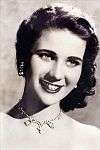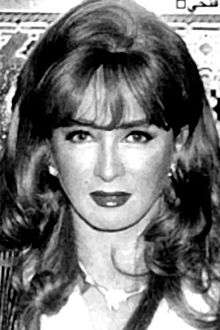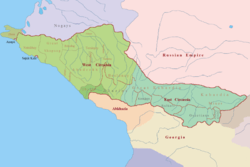Circassians in Egypt
| |||||||||||||||||
| Regions with significant populations | |||||||||||||||||
|---|---|---|---|---|---|---|---|---|---|---|---|---|---|---|---|---|---|
| Alexandria, Cairo, Giza, Port Said, Sharqia Governorate | |||||||||||||||||
| Languages | |||||||||||||||||
| |||||||||||||||||
| Religion | |||||||||||||||||
| Sunni Muslim (predominant) | |||||||||||||||||
The Circassians in Egypt refers to people of present-day Egypt who descended from Circassians, the European ethnic group native to Northwest Caucasus (today Russia). They were deeply rooted in Egyptian society and the history of the country. For centuries, Circassians have been part of the ruling elite in Egypt, having served in high military, political and social positions.[1] The Circassian presence in Egypt traces back to 1297 when Lajin became Sultan of Mamluk Sultanate of Egypt. Under the Burji dynasty, Egypt was ruled by twenty one Circassian sultans from 1382 to 1517.[2][3][4] Even after the abolishment of the Mamluk Sultanate, Circassians continued to form much of the administrative class in Egypt Eyalet of Ottoman Empire, Khedivate of Egypt, Sultanate of Egypt and Kingdom of Egypt.[1] Following the Revolution of 1952, their political impact has been relatively decreased.
In addition to paternal Circassian monarchs and pashas, the Circassian women, who were brought to marry senior government officials after conversion to Islam, has also contributed to the increase of Circassian population in Egypt. In the Muhammad Ali dynasty, with the exception of Khediva Zubeyda Javidan and the last Queen, Narriman Sadek, who had no known Circassian ancestors, all official khedivas, sultanas and queen consorts of Egypt were ethnic Circassians (either partial or allegedly full). These women include Khediva Emina, Khediva Ikbal, Sultana Melek, Queen Nazli and Queen Farida. Princess Fawzia, who later became Empress consort of Iran, was 10/16th Circassian.
The Circassian role in Egyptian cultural and intellectual life has been observed even after the Revolution of 1952. In the golden era of Egyptian cinema, the vast majority of popular actors and actresses, including Hind Rostom, Hussein Fahmy, Leila Fawzy, Mariam Fakhr Eddine, Mustafa Fahmy, Naglaa Fathy, Rushdy Abaza, Youssef Fakhr Eddine and Zubaida Tharwat, were of either partial or predominant Circassian and Turco-Circassian descent. Former Ottoman Circassian families of Egypt is also known as Turco-Circassian or simply Turkish, without reference to Circassian origin, as they were previously based in Istanbul, Ottoman Empire (present-day Turkey). Although many Egyptian Circassians exhibit physical characteristics attributed to their forefathers, those with far-removed Circassian ancestry were assimilated into other local populations over the course of time. With the lack of censuses based on ethnicity, population estimates vary significantly. Mainly of mixed Abaza, Adyghe and Arab origin, the Abaza family is the largest extended family with more than 50,000 members in the country.[5][6][7][8] One of Egypt's richest families, the family has played a long-standing role in Egyptian business life.
History
Circassians in Egypt have a long history. They arrived in Egypt during the Mamluk and Ottoman era, although a small number migrated as muhajirs in the late 19th century as well. The Circassians in Egypt were very influential from the 13th century. To a certain extent, they shared the same role as their other Circassian brethren who lived in neighbouring Ottoman Turkey; many were importees, deportees, slaves, but also made up many of the notable noble families, while many others were kingmakers, royal consorts, military commanders, soldiers, craftsmen and artists.
Religion
Historically, many Circassian women were converted from Christianity to Islam. Today, the Circassians in Egypt are almost exclusively Sunni Muslim.
Notables
Notable Egyptians of either partial or full Circassian descent include:
- Al-Mansour Lajin – Mamluk Sultan of Egypt (1297–1299)
- Az-Zahir Barquq – Mamluk Sultan of Egypt (1382–1389) (1390–1399)
- Al-Nasir Faraj – Mamluk Sultan of Egypt (1399–1405) (1405–1412)
- Al-Mansur Abdul Aziz – Mamluk Sultan of Egypt (1405)
- Al-Mu'ayyad Sheikh – Mamluk Sultan of Egypt (1412–1421)
- Al-Muzaffar Ahmad – Mamluk Sultan of Egypt (1421)
- Az-Zahir Tatar – Mamluk Sultan of Egypt (1421)
- As-Saleh Muhammad – Mamluk Sultan of Egypt (1421)
- Al-Ashraf Barsbay – Mamluk Sultan of Egypt (1422–1438)
- Al-Aziz Yusef – Mamluk Sultan of Egypt (1438)
- Az-Zahir Jaqmaq – Mamluk Sultan of Egypt (1438–1453)
- Al-Mansur Osman – Mamluk Sultan of Egypt (1453)
- Al-Ashraf Inal – Mamluk Sultan of Egypt (1453–1461)
- Al-Mu'ayyad Ahmad – Mamluk Sultan of Egypt (1460)
- Az-Zahir Bilbay – Mamluk Sultan of Egypt (1467–1468)
- Al-Ashraf Qaitbay – Mamluk Sultan of Egypt (1468–1496)
- An-Nasir Muhammad – Mamluk Sultan of Egypt (1496–1498)
- Az-Zahir Qansuh – Mamluk Sultan of Egypt (1498–1500)
- Al-Ashraf Janbalat – Mamluk Sultan of Egypt (1500–1501)
- Al-Adil Tumanbay – Mamluk Sultan of Egypt (1501)
- Al-Ashraf Qansuh – Mamluk Sultan of Egypt (1501–1516)
- Al-Ashraf Tumanbay – Mamluk Sultan of Egypt (1516–1517)
- Ismail – Khedive of Egypt and the Sudan (1867–1879)
- Tewfik – Khedive of Egypt and the Sudan (1879–1892)
- Abbas II – Khedive of Egypt and the Sudan (1892–1914)
- Hussein Kamel – Sultan of Egypt (1914–1917)
- Fuad I – Sultan of Egypt (1917–1922) and King of Egypt (1922–1936)
- Faruk I – King of Egypt (1936–1952) and King of the Sudan (1951–1952)
- Farida – Queen consort of Egypt (1938–1948)[9]
- Fawzia Fuad – Empress consort of Iran (1941–1948)
- Fuad II – King of Egypt (1953)
See also
References
- 1 2 Lewis, Martin W. The Circassian Mystique and its Historical Roots. Retrieved 18 May 2015.
- ↑ McGregor, Andrew James (2006). A Military History of Modern Egypt: From the Ottoman Conquest to the Ramadan War. Greenwood Publishing Group. p. 15. ISBN 9780275986018.
By the late fourteenth century Circassians from the north Caucasus region had become the majority in the Mamluk ranks.
- ↑ Massoud, Sami G. (2007). The Chronicles and Annalistic Sources of the Early Mamluk Circassian Period. Leiden: Brill Publishers.
- ↑ Natho, Kadir I. (2009). Circassian History. Xlibris Corporation.
- ↑ "Rushdi Abaza, AlexCinema". www.bibalex.org. Retrieved 18 May 2015.
- ↑ Afaf Lutfi Sayyid-Marsot, Egypt in the reign of Muhammad Ali Pasha, pp. 123–124.
- ↑ Yunan Labib Rizk, The making of a king, Al-Ahram Weekly, 762, 29 September – 5 October 2005.
- ↑ Goldschmidt, Jr., Arthur (2000). Biographical Dictionary of Modern Egypt. Lynne Rienner Publishers. p. 1. ISBN 978-1-55587-229-8. Retrieved 18 May 2015.
- ↑ http://www.egyptindependent.com/news/queen-farida-king-farouks-first-wife
.jpg)













